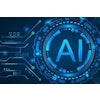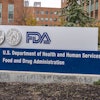
Radiologists play an important role in identifying electronic cigarette (e-cigarette) or vaping-associated lung injury (EVALI) in adolescents -- often acting as first-line diagnosticians in a clinical situation that can be unclear, according to a commentary published August 19 in Pediatric Radiology.
There's no doubt that radiologists' expertise improves patient care when it comes to recognizing EVALI, lead author Jonathan Friedman, PhD, of the University of Texas Southwestern Medical Center in Dallas told AuntMinnie.com.
"The radiologist's key role is one of being familiar with the imaging features of EVALI in otherwise healthy adolescents, and to be able to include it as part of a differential diagnosis to allow clinicians to obtain the pertinent history to make the diagnosis," he said. "This is particularly helpful in pediatric patients where the presenting symptoms can be and the vaping history may not be initially disclosed without distinct questioning."
Vaping into the stratosphere
E-cigarettes were introduced to the U.S. market in 2007, and their use has skyrocketed, especially among teenagers, the authors noted: In 2011, 1.5% of high school students and 0.6% of middle school students reported using e-cigarettes, but by 2018, 20.8% of high school students and 4.9% of middle school students were vaping.
And between 2017 and 2018, the use of e-cigarettes by high schoolers increased 78% and by middle schoolers by 48% -- a surge that prompted the U.S. surgeon general to declare an epidemic.
More recent data from the National Youth Tobacco Survey (NYTS) has shown that use of e-cigarettes among teenagers decreased in 2021 -- to 11.3% of high schoolers and 2.8% of middle schoolers -- but the NYTS cautioned that these results may not offer an accurate picture since the survey that produced them was administered during the COVID-19 pandemic.
Along with increased use of e-cigarettes has come increased incidence of e-cigarette or vaping product use-associated lung injury (EVALI) resulting in hospitalization and even death, particularly between March 2020 and February 2021, the group noted. This is due in part to young people vaping products that contain THC or nicotine or both; these may also contain vitamin E acetate, a chemical used as a diluting material for THC.
"Once heated by vape pens, vitamin E acetate can decompose to ketene gas, which has been shown to cause acute lung injury in animal testing," the group explained.
EVALI's symptoms may include cough, shortness of breath, dyspnea on exercise, fever, chills, and fatigue -- all of which can manifest in other conditions such as COVID-19, exposures to environmental toxins, and autoimmune diseases, according to the authors. Patients presenting with respiratory symptoms undergo chest x-ray, but these tests can appear normal in some people. Noncontrast CT is a more effective modality for EVALI diagnosis, they wrote.
"Noncontrast CT of the chest is a much better modality to further characterize and show the extent of pulmonary findings seen on chest radiography or when no radiographic abnormality is detected in the setting of known vaping exposure," they noted.
Discerning between COVID and EVALI
The characteristics of EVALI and COVID-19 overlap, which highlights again how crucial radiologist expertise is when it comes to interpreting CT findings. In particular, typical x-ray findings for COVID can look like EVALI. This may be true for CT findings for both conditions as well, but there are some features that are different. For example, on CT exams, EVALI tends to show subpleural peribrochovascular and lobular sparing, but COVID-19 does not.
Friedman and colleagues offered an outline of differences in features found on CT imaging for EVALI, COVID-19, and multisystem inflammatory syndrome in children (MIS-C):
| CT features of MISC-C, COVID-19, and EVALI associated with adolescent e-cigarette use | |||
| Finding | MIS-C | COVID-19 | EVALI |
| Atoll sign | No | Rare | Yes |
| Distribution pattern | Bilateral, mostly centrally distributed | Bilateral and peripheral, and mostly in lower lung | Diffuse or bilateral symmetrical, mostly lower lung |
| Ground-glass centrilobular nodules | No | No | Yes |
| Ground-glass opacities | Yes | Yes | Yes |
| Halo sign | No | Yes | No |
| Pleural effusion | Yes -- common and bilateral | Rare | Sometimes |
| Subpleural, peri-broncho-vascular or lobular sparing | No | Rare | Yes, frequently |
In an era when radiologists are keen to demonstrate their value in the healthcare enterprise, applying their expertise to discerning EVALI from COVID-19 offers a solid opportunity, according to the authors.
"Radiologists play an important role by recognizing the imaging findings that can be encountered with EVALI and can ultimately help expedite appropriate and effective care in pediatric patients with this diagnosis," they concluded.





















